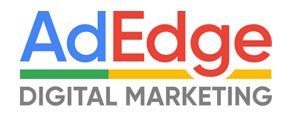
Every year, there are new trends and best practices that change the digital marketing landscape. This year is no different, especially when it comes to SEO. Here are three SEO trends to kick your organic rank up a notch and prepare you for a successful 2019.
1) Voice Search Is Growing: Voice capabilities are no longer just an idea. Thanks to Google Home, Amazon Echo, Microsoft Cortana, Apple Siri and more, people are using voice commands more and more to search online. You’ll even find voice search capabilities in many new cars. As a result it’s becoming more important to optimize your Search Engine Marketing (SEM) campaigns for voice searches rather than typed search terms alone. Is your website content phrased in a way to answer questions that people ask with voice? Are your answers short and simple? Do they answer questions in a way that is selfless and of true value to those who are searching? These are just a few ways to check if your content is optimized for voice search.
2) Shift From keywords To Topics: Just as search is getting smarter with voice commands, search engines are getting smarter by recognizing topics of searches instead of individual keywords. This creates opportunities for marketers to reach audiences who are interested in topics and optimize for those searches instead of relying on hyper specific keywords to trigger ads. By creating content that is smart, well thought out, informative, and answers questions that are topic related, smart marketers will be able to rank higher in search results than competitors who may be simply stuffing keywords into their web-pages or blog posts. This ties into content marketing which will continue to grow this year as well.
3) Long-term Mindset: This may not exactly be a new trend, but it is essential whenever discussing SEO. Optimizing your website for search is an ongoing process and like nearly any marketing activity, great results take time and effort. Creating informative and valuable content consistently, and answering questions typically asked online will slowly increase your website traffic. And this will improve your brand equity as an industry leader. Building valuable and relevant content on your website and other online assets will establish your business as the “go to” in your industry and will eventually build your organic rank. As the internet gets more crowded, the key to SEO success will be to generate forward-thinking content. Keep these trends in mind when creating your SEO strategy and your business is more likely to stay “on top” in 2019 and beyond.
If you would like to learn about how SEO can help your business generate more online traffic schedule a free consultation or visit www.adedgemarketing.com for more information.












